Abstract
1. Antigen challenge of sensitized rat peritoneal mast cells in the absence of calcium failed to release histamine. The release when calcium was added subsequently declined rapidly, this desensitization being almost complete in 4 min.
2. Phosphatidyl serine (10 μg/ml.) reduced the rate of desensitization so that decay of the response to added calcium was not complete after 16 min.
3. Exposing normal cells to dextran resulted in a slow rate of desensitization, the response to phosphatidyl serine added with calcium having decayed by only 27% within 10 min.
4. Phosphatidyl serine added with dextran prevented desensitization so that the response to subsequently added calcium did not decay even after an interval of 20 min.
5. Cells activated by dextran and calcium became rapidly desensitized as shown by decay of the response to added phosphatidyl serine which was almost complete by 5 min.
6. Histamine release by the calcium ionophore (A 23187) added to cells at intervals before the addition of calcium did not show significant decay.
7. Desensitization of the cells to antigen did not change their response to the ionophore.
Full text
PDF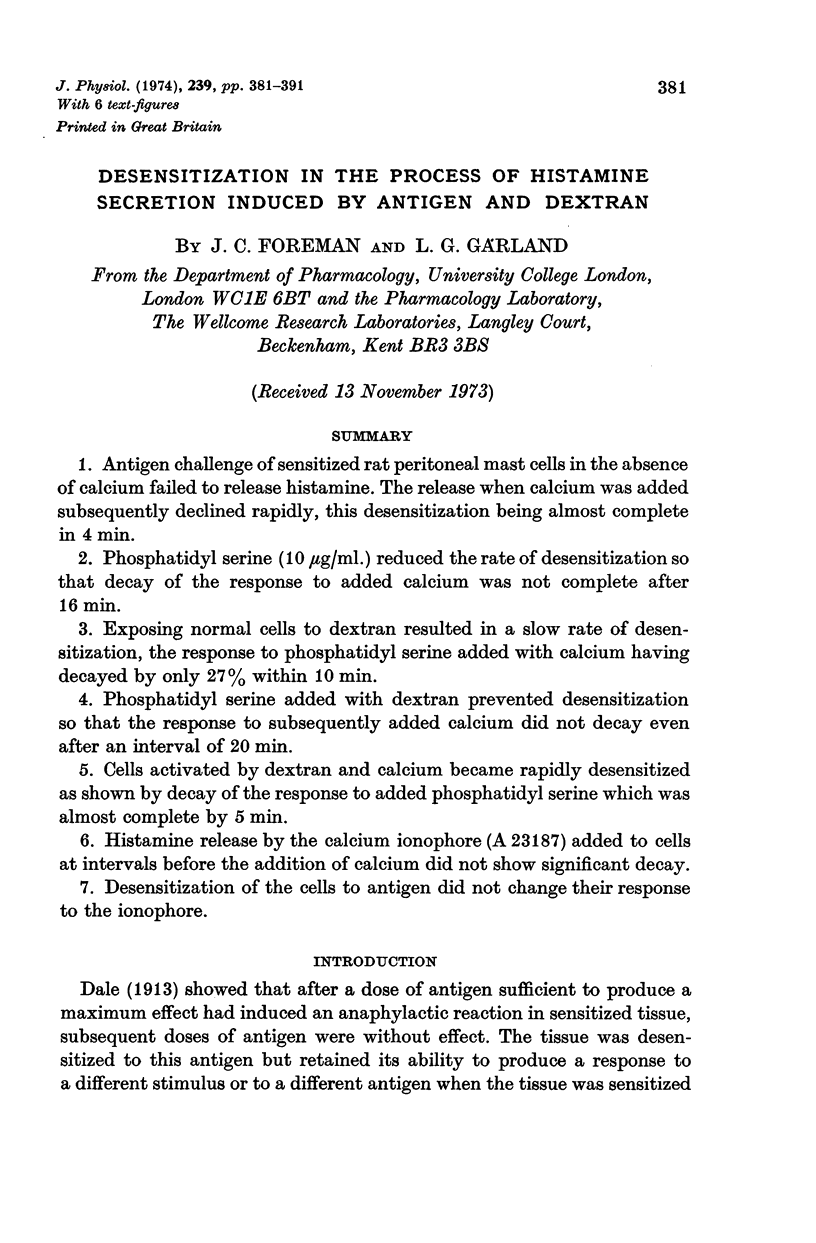
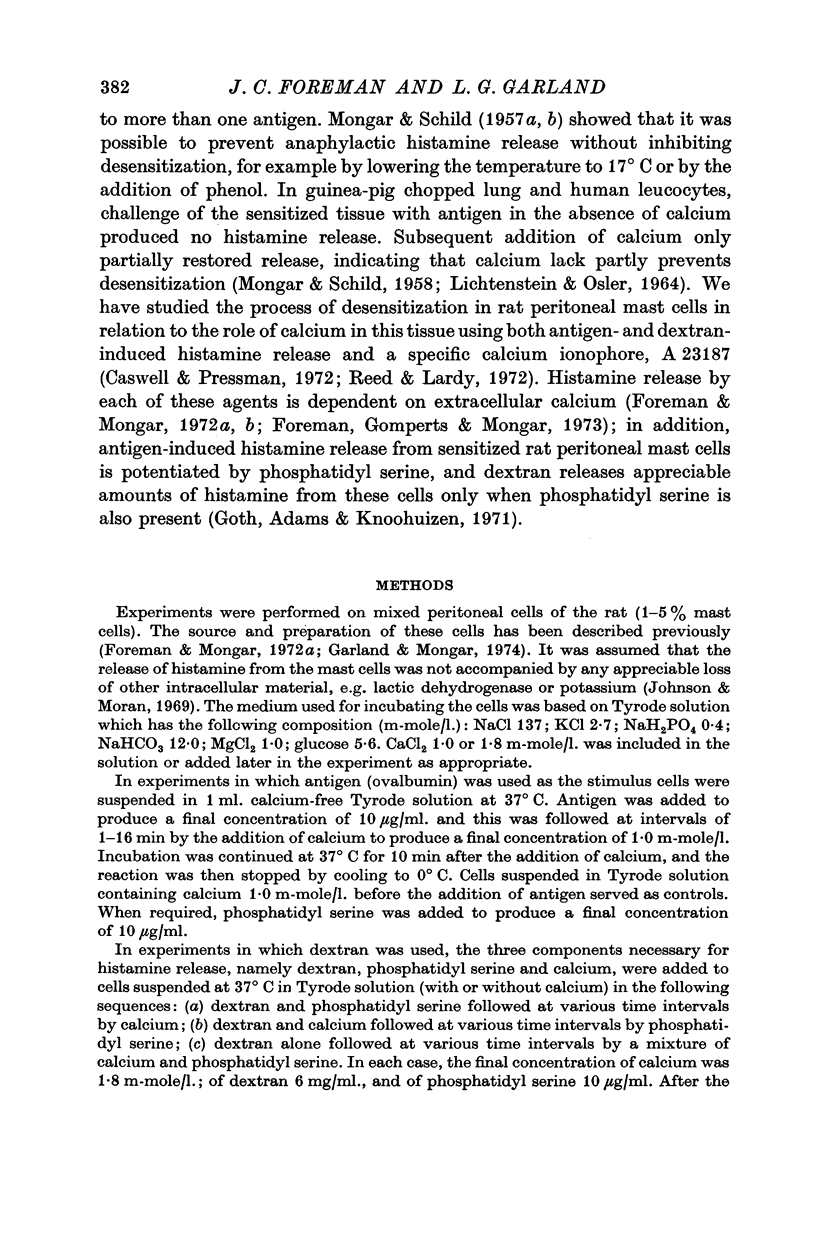
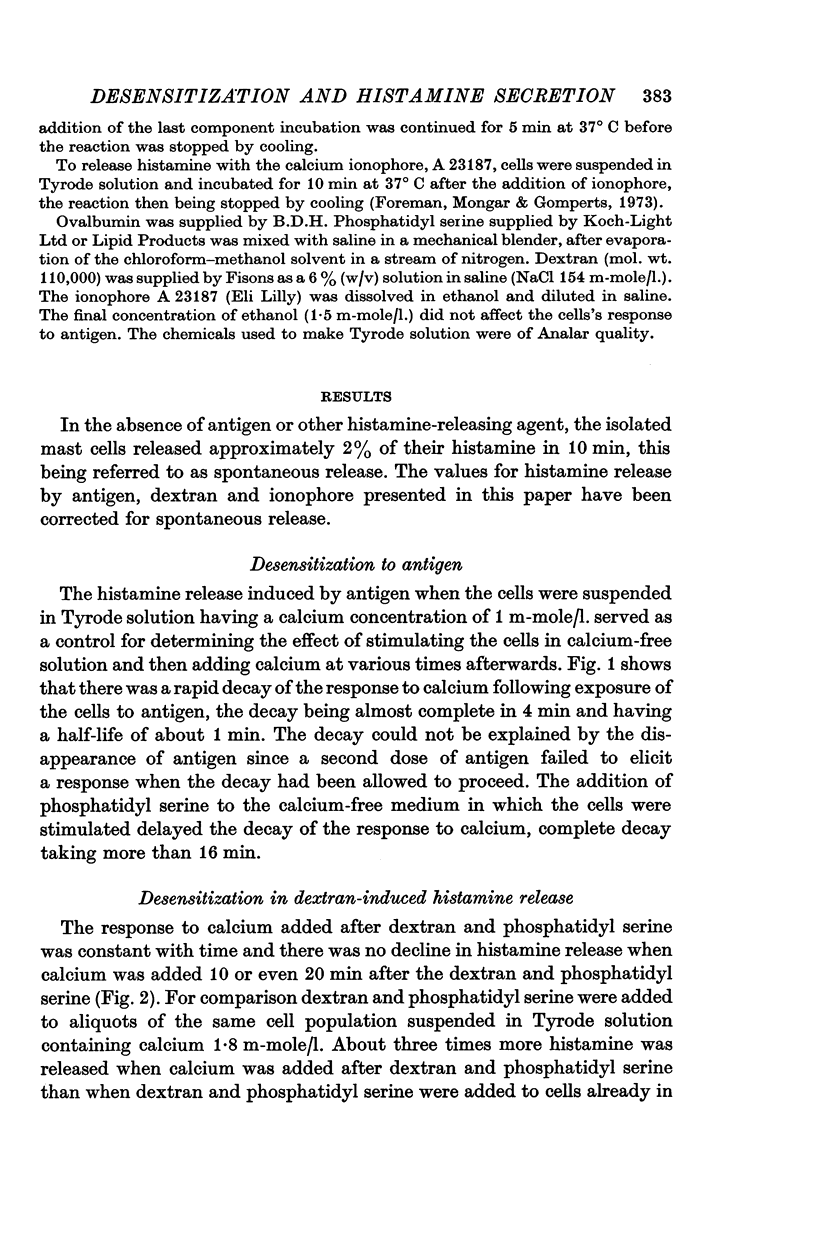
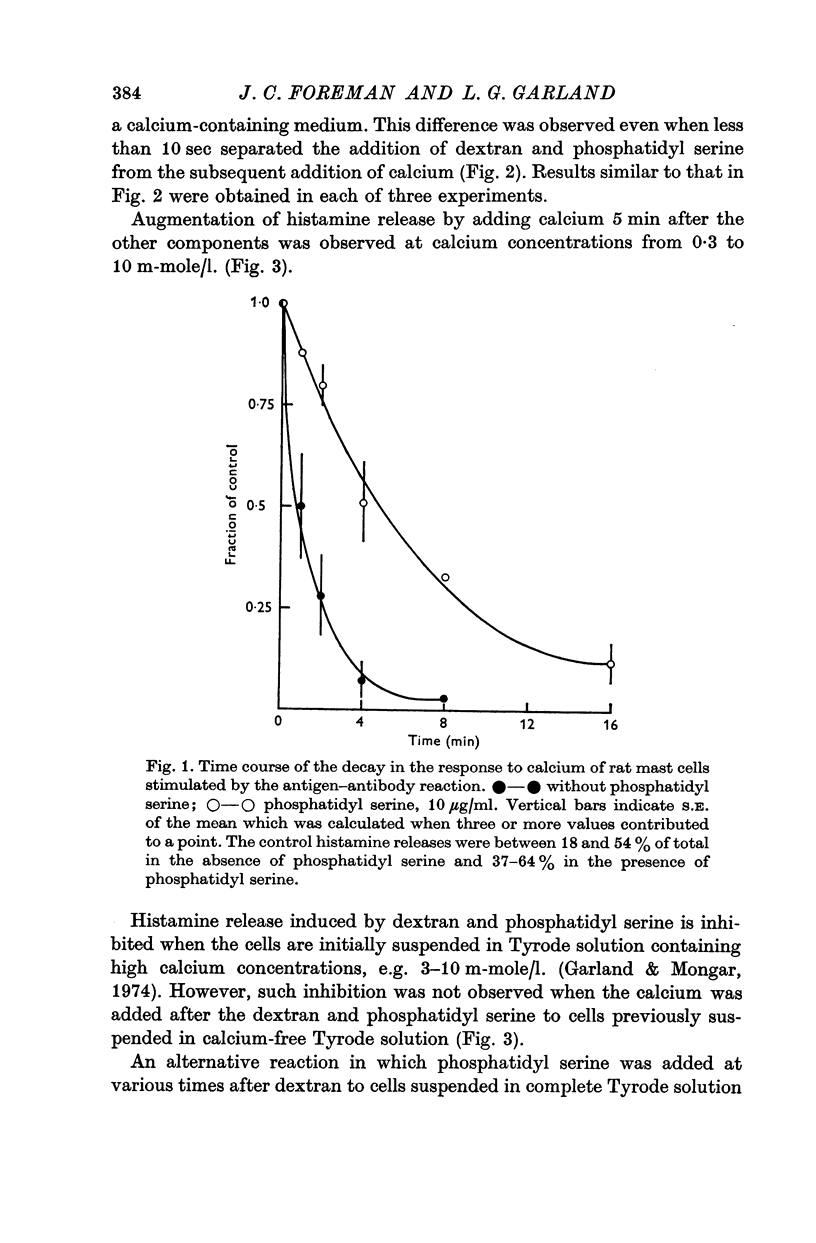
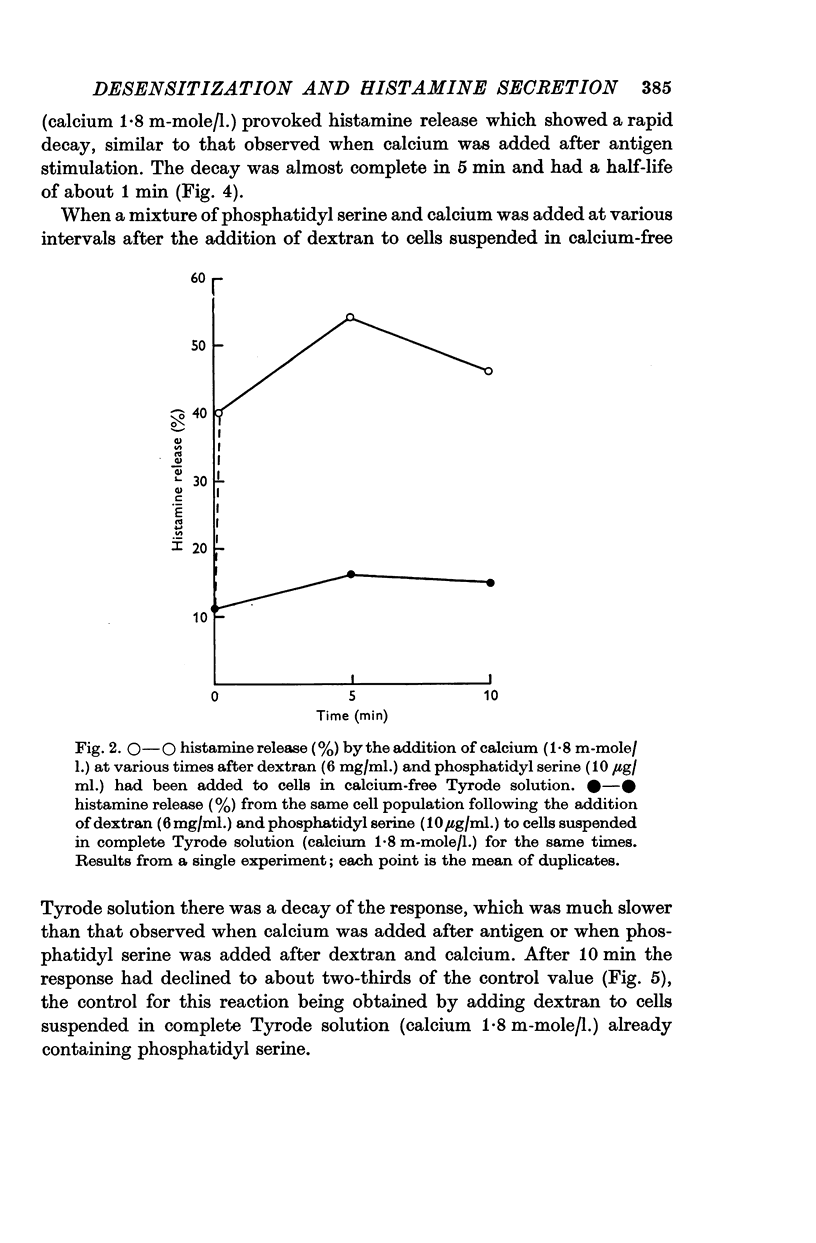
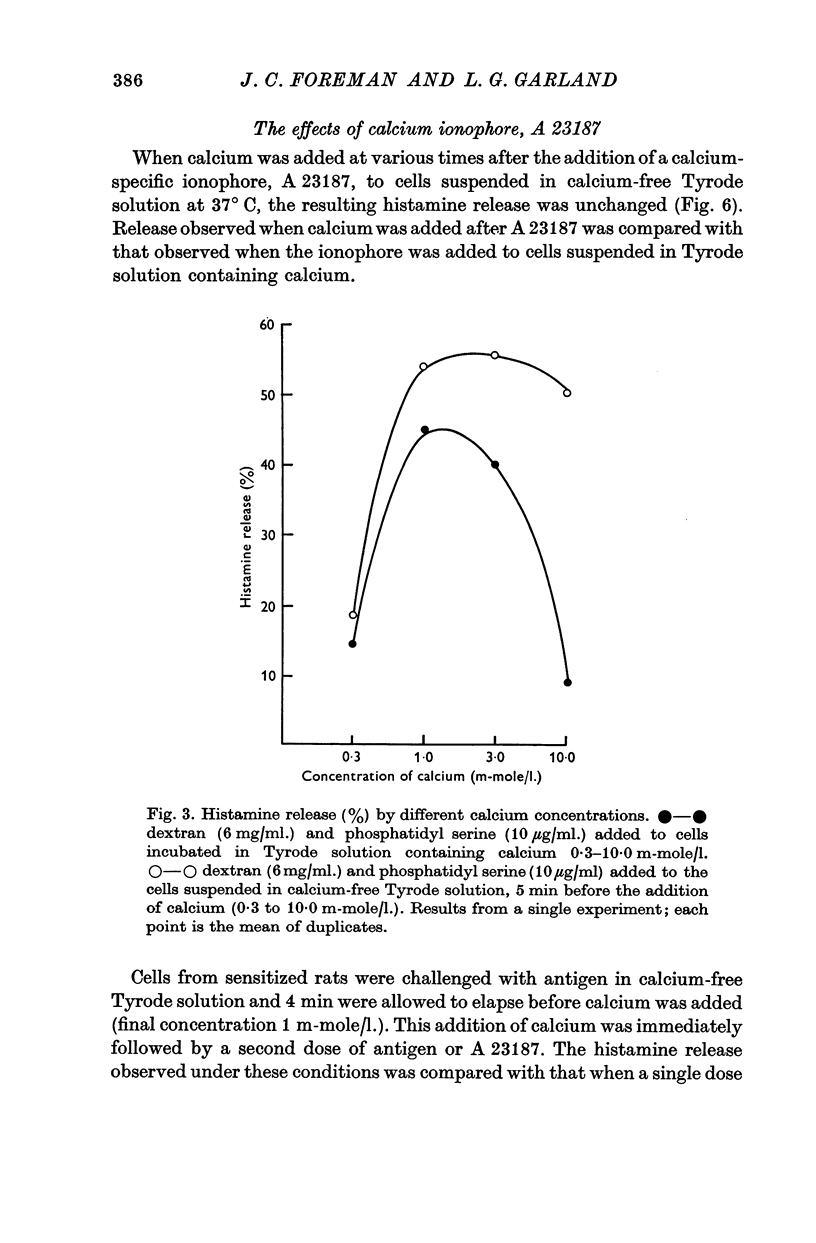
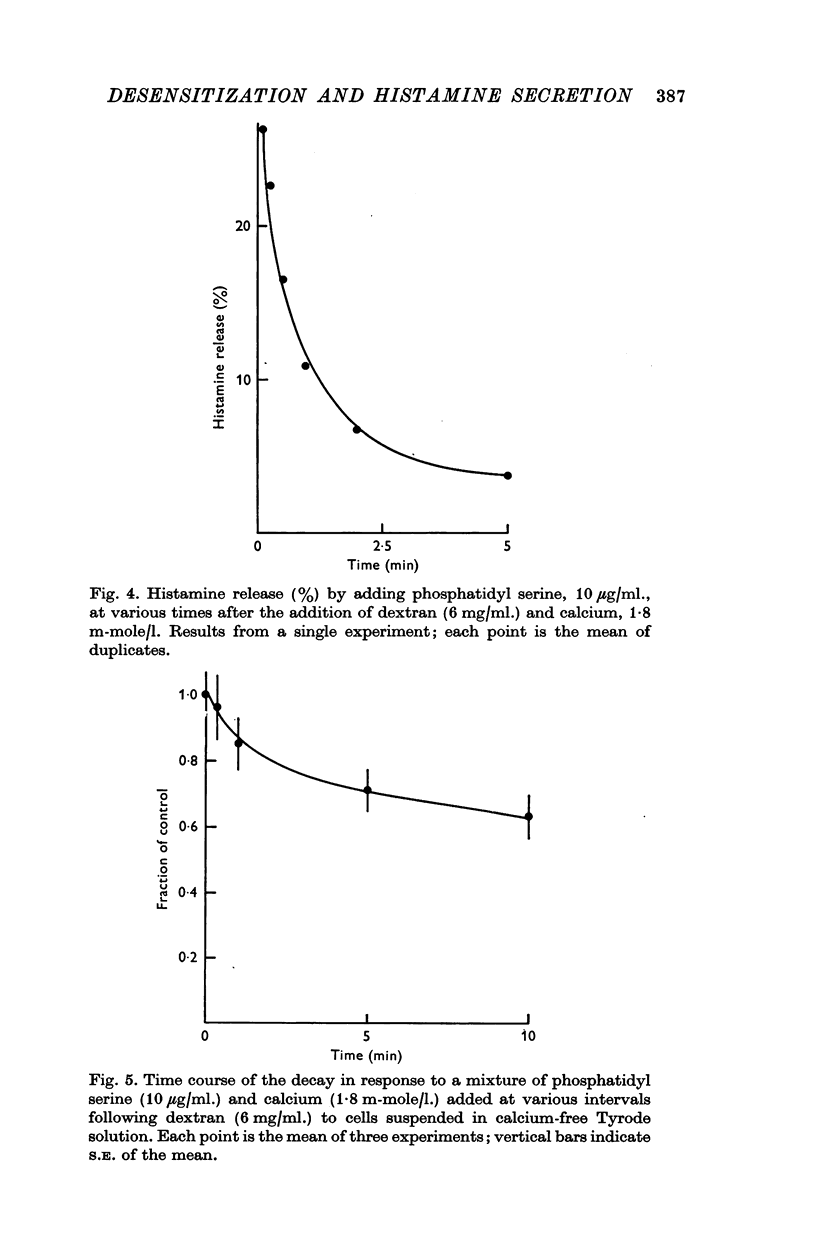
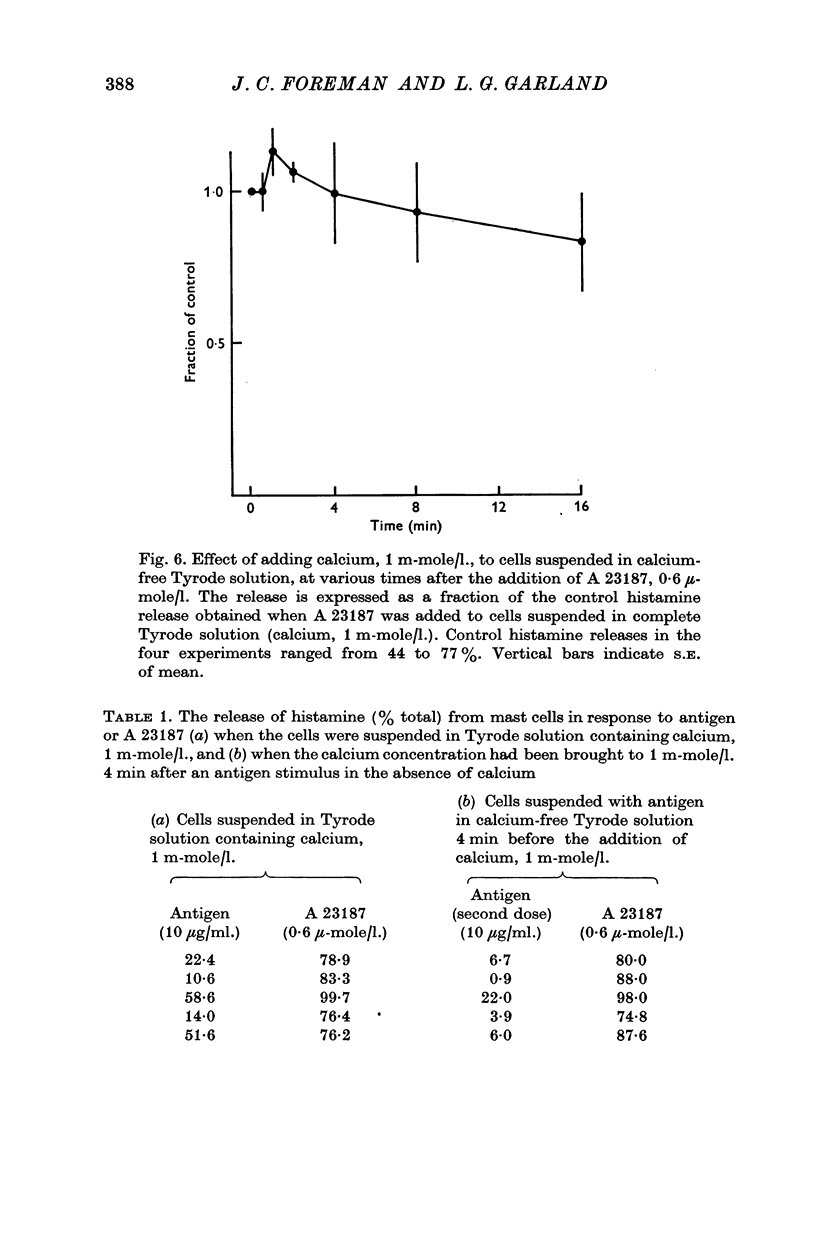
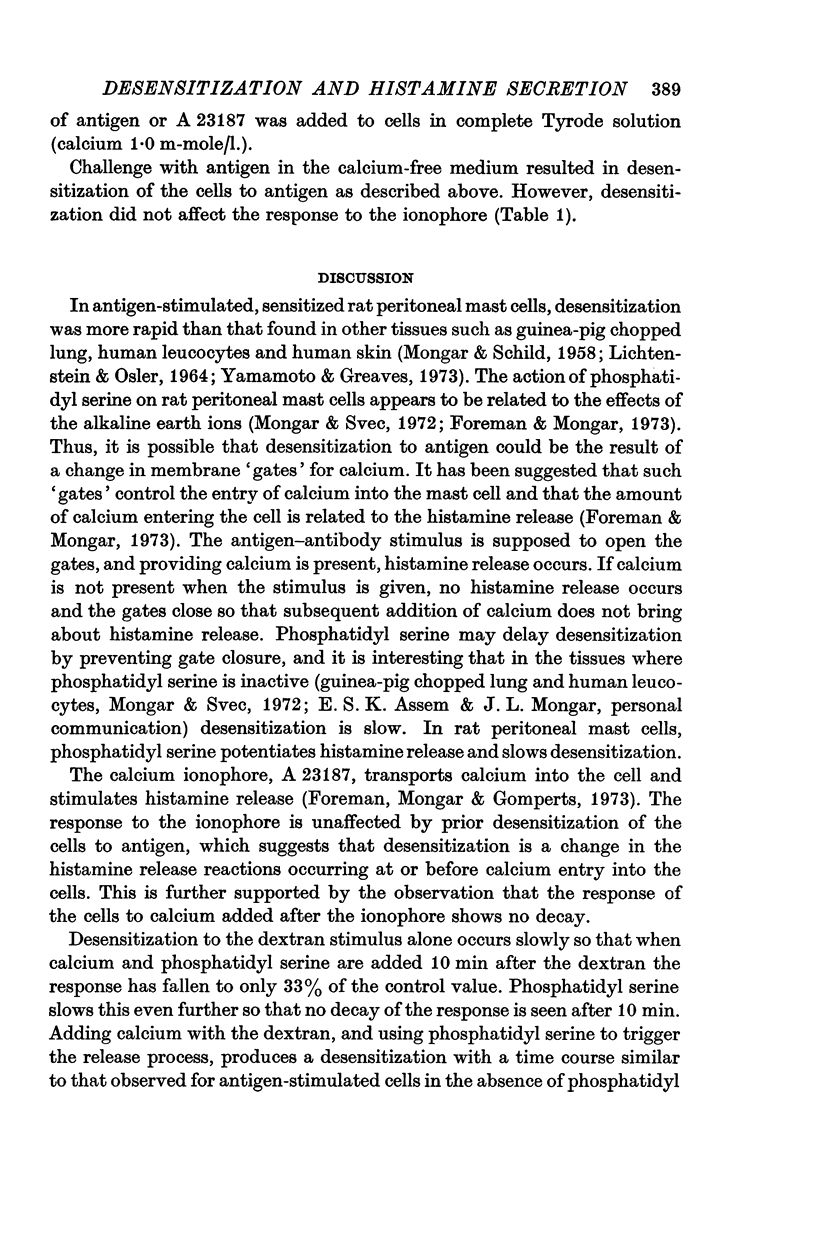
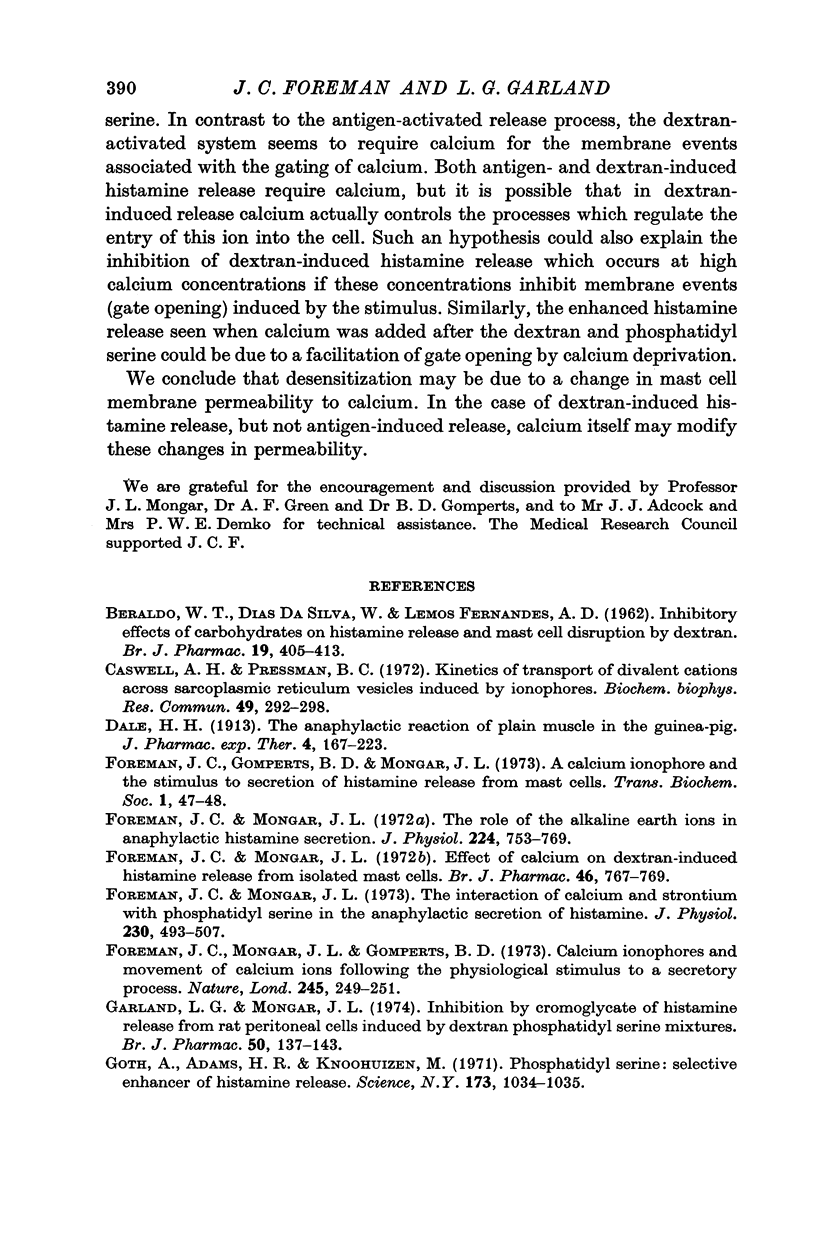
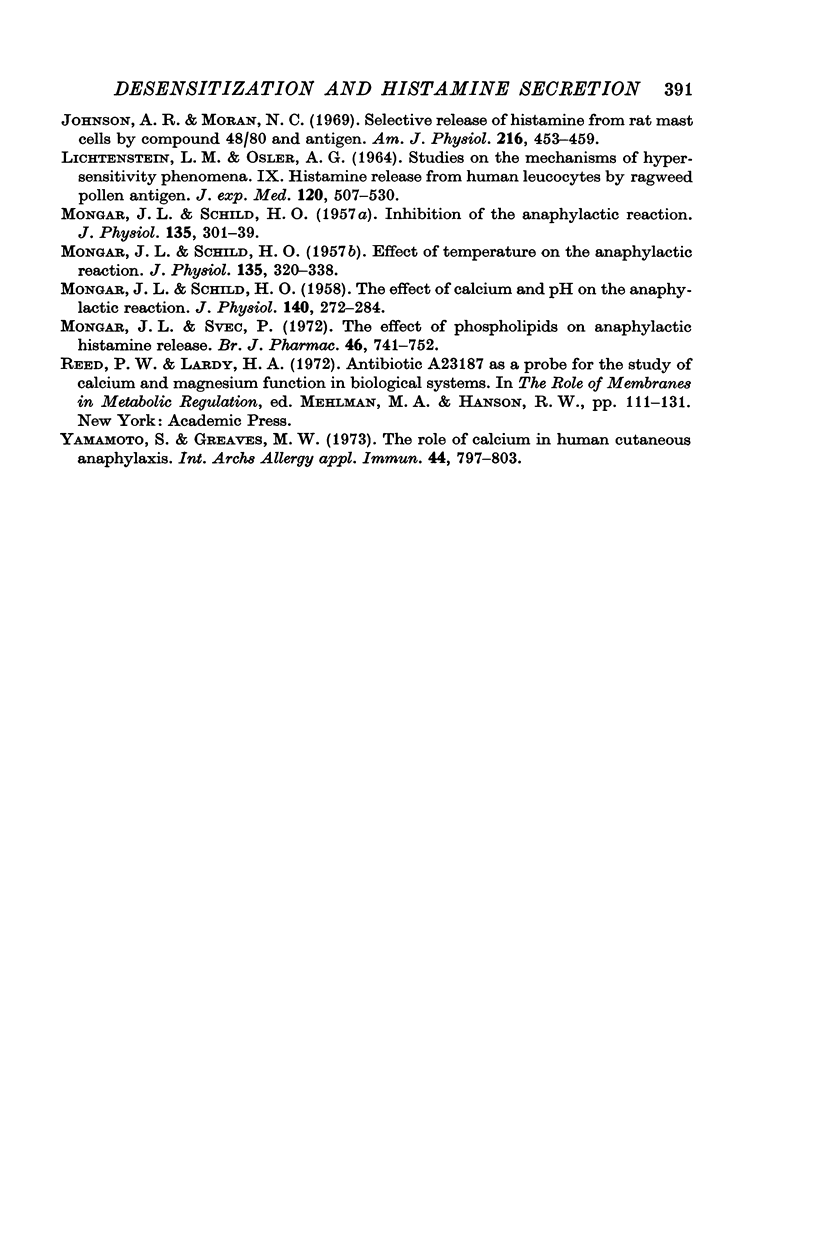
Selected References
These references are in PubMed. This may not be the complete list of references from this article.
- BERALDO W. T., da SILVA W., FERNANDES A. D. Inhibitory effects of carbohydrates on histamine release and mast cell disruption by dextran. Br J Pharmacol Chemother. 1962 Dec;19:405–413. doi: 10.1111/j.1476-5381.1962.tb01445.x. [DOI] [PMC free article] [PubMed] [Google Scholar]
- Caswell A. H., Pressman B. C. Kinetics of transport of divalent cations across sarcoplasmic reticulum vesicles induced by ionophores. Biochem Biophys Res Commun. 1972 Oct 6;49(1):292–298. doi: 10.1016/0006-291x(72)90043-5. [DOI] [PubMed] [Google Scholar]
- Foreman J. C., Mongar J. L. Effect of calcium on dextran-induced histamine release from isolated mast cells. Br J Pharmacol. 1972 Dec;46(4):767–769. doi: 10.1111/j.1476-5381.1972.tb06902.x. [DOI] [PMC free article] [PubMed] [Google Scholar]
- Foreman J. C., Mongar J. L., Gomperts B. D. Calcium ionophores and movement of calcium ions following the physiological stimulus to a secretory process. Nature. 1973 Oct 5;245(5423):249–251. doi: 10.1038/245249a0. [DOI] [PubMed] [Google Scholar]
- Foreman J. C., Mongar J. L. The interaction of calcium and strontium with phosphatidyl serine in the anaphylactic secretion of histamine. J Physiol. 1973 Apr;230(2):493–507. doi: 10.1113/jphysiol.1973.sp010200. [DOI] [PMC free article] [PubMed] [Google Scholar]
- Foreman J. C., Mongar J. L. The role of the alkaline earth ions in anaphylactic histamine secretion. J Physiol. 1972 Aug;224(3):753–769. doi: 10.1113/jphysiol.1972.sp009921. [DOI] [PMC free article] [PubMed] [Google Scholar]
- Garland L. G., Mongar J. L. Inhibition by cromoglycate of histamine release from rat peritoneal mast cells induced by mixtures of dextran, phosphatidyl serine and calcium ions. Br J Pharmacol. 1974 Jan;50(1):137–143. doi: 10.1111/j.1476-5381.1974.tb09601.x. [DOI] [PMC free article] [PubMed] [Google Scholar]
- Goth A., Adams H. R., Knoohuizen M. Phosphatidylserine: selective enhancer of histamine release. Science. 1971 Sep 10;173(4001):1034–1035. doi: 10.1126/science.173.4001.1034. [DOI] [PubMed] [Google Scholar]
- Johnson A. R., Moran N. C. Selective release of histamine from rat mast cells by compound 48-80 and anitgen. Am J Physiol. 1969 Mar;216(3):453–459. doi: 10.1152/ajplegacy.1969.216.3.453. [DOI] [PubMed] [Google Scholar]
- LICHTENSTEIN L. M., OSLER A. G. STUDIES ON THE MECHANISMS OF HYPERSENSITIVITY PHENOMENA. IX. HISTAMINE RELEASE FROM HUMAN LEUKOCYTES BY RAGWEED POLLEN ANTIGEN. J Exp Med. 1964 Oct 1;120:507–530. doi: 10.1084/jem.120.4.507. [DOI] [PMC free article] [PubMed] [Google Scholar]
- MONGAR J. L., SCHILD H. O. Effect of temperature on the anaphylactic reaction. J Physiol. 1957 Feb 15;135(2):320–338. doi: 10.1113/jphysiol.1957.sp005713. [DOI] [PMC free article] [PubMed] [Google Scholar]
- MONGAR J. L., SCHILD H. O. Inhibition of the anaphylactic reaction. J Physiol. 1957 Feb 15;135(2):301–319. doi: 10.1113/jphysiol.1957.sp005712. [DOI] [PMC free article] [PubMed] [Google Scholar]
- MONGAR J. L., SCHILD H. O. The effect of calcium and pH on the anaphylactic reaction. J Physiol. 1958 Feb 17;140(2):272–284. doi: 10.1113/jphysiol.1958.sp005933. [DOI] [PMC free article] [PubMed] [Google Scholar]
- Mongar J. L., Svec P. The effect of phospholipids on anaphylactic histamine release. Br J Pharmacol. 1972 Dec;46(4):741–752. doi: 10.1111/j.1476-5381.1972.tb06899.x. [DOI] [PMC free article] [PubMed] [Google Scholar]
- Yamamoto S., Greaves M. W. The role of calcium in human cutaneous anaphylaxis. Int Arch Allergy Appl Immunol. 1973;44(6):797–803. doi: 10.1159/000230983. [DOI] [PubMed] [Google Scholar]


